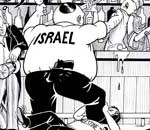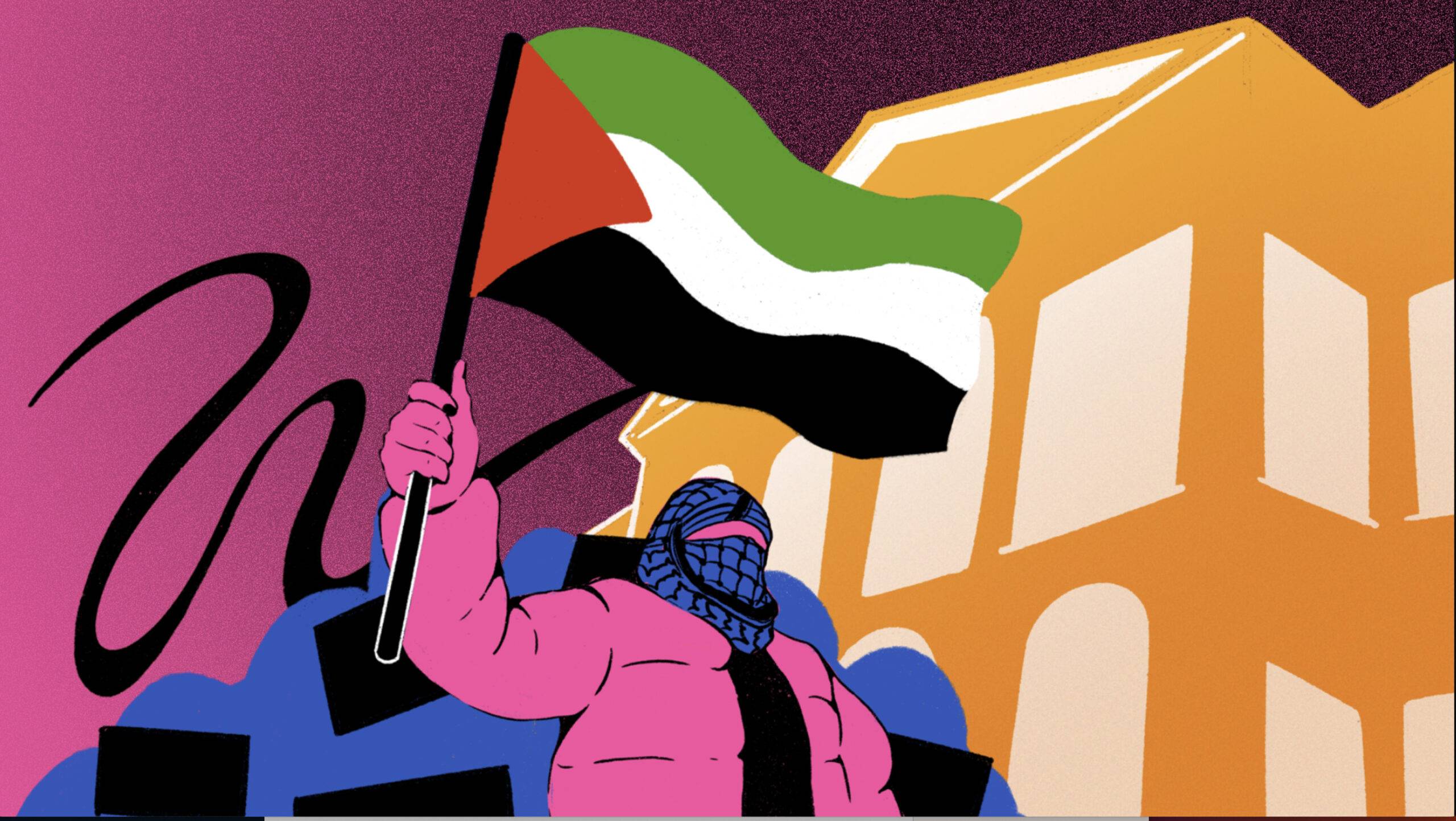By Janina Clara McQuoid
[slideshow id=14] Photographs by Sophie Tianxin ChenOn the evening of April 23rd, seventeen men and women came together to talk, and to listen. Finalizing their undergraduate careers at SAIC with either a Bachelor of Fine Arts with a thesis, Bachelor of Arts in Visual and Critical Studies, or a dual degree in Fine Arts and Visual and Critical Studies, this group of students is diverse and extremely opinionated. They spoke of their memories, frustrations, fears and that which makes them euphoric. They spoke with eloquence of the mundane; they recounted some epiphany they may have had a few months before.
The presenters were grouped into three separate panels, including “Traversing the In-between”, “You May Want to Turn Up the Volume” and “Currency Exchange.” The panelists in the first group advised during the Q and A’s that “one shouldn’t try to interpret our presentations as being connected to each others’ necessarily”. The last panel, on the other hand, seemed to benefit from the arrangement, answering heated questions from the audience as a group. Finally, the middle panel was precisely its title – topics of such viscerality, violence, insanity, and drama – pure excitement!
I visited one of their symposium rehearsals and found some teaching yoga positions, others pondering on whether to wear a fake beard, hiking clothes and backpack, and a Chinatown hat. I saw a group of adults, intellectuals, artists, and comedians that were too curious and too ambitious to rest on a certainty.
“ALL THE SNOW THAT WAS GOING TO MELT HAD MELTED”
Liberty Herring, “Mountains I have climbed with my father”
Liberty opened the show with a presentation on memories of climbing Yosemite’s High Country. She spoke of Sierra Nevada, of hunger and exhaustion, of her father and “blisters [they] popped every night, and covered with moleskin every morning”. It was an expression of personal history, of remembrance and tradition, furthermore “a way of saying thank you to my father”. The photograph that accompanied was breathtaking: a mountain of different greens, rocks of all shapes and sizes, an endless landscape and a small figurine in the distance – her father.
“I TRADED A PACK OF CIGARETTES AND SOME MONEY WITH A FARMER FOR A DONKEY”
Sean Tang, “Visualizing Risk: Scotland – Singapore Overland”
This was an adventure within words, a spiral of complexity and eloquence – the presentation as well as the content. Sean traveled by himself from Scotland to Singapore “being centered and recentered” by a GPS, facing near kidnapping, dealing with inaccuracy, and the vastness of this world’s environments. His map, as his journey, was so extensive that it didn’t fit onto the screen on which it was being projected. He referenced Lacan’s “mirror stage”, which he compares to the traveler who trusts the mirror image of himself more so than his actual self, who stands before the mirror. He explains that the GPS disguises as opposed to eliminating risks. He spoke of “the sound [he] heard when [he] was shot at”.
“AIC BRAND-NEW MODERN WING WAS BOMBED”
Kerri O’Malley, “Graffiti public space”
Between pictures of colorful explosions of tags and images, Kerri disputed conceptions of the public space. “The museum spokesperson reacted to this incident not by condemning the graffiti but by first complementing the piece, saying it was a good use of color then pointing out the museum had graffiti within its walls not on its outside walls.” Kerri explained what she called “passive acceptance”, that the spokesperson conceded that graffiti was the price of doing “business” in the big city. She proposed a recontextualization of graffiti, “to place it not in terms of art, vandalism or fame, but to put it back where it belongs – in the context of public space … exciting not only our eyes but creating a possibility for change in the structure of public space.”
“OVER FIVE MILLION STEPS: A SOUTHBOUND JOURNEY, TOWARDS WHAT?”
Eric Rowan, “A space that doesn’t exist”
Eric, like Sean and Liberty, spoke of a travel experience. He delved in American subculture, his idea of “exploring the landscape on foot” – the Appalachian trail, which he said had been hiked by people from all walks of life: an 81 year old, a war veteran looking to “walk the army out of his system”. He described his journey as the type of experience adrenaline junkies look for, “over five million steps” on a trail that stretches from Maine to Georgia, where time slows to the pace of a walk. Triumphantly he celebrated: “this time in our lives we were not working towards retirement”.
“DIM SUM – CHINATOWN STYLE”
Sabina Sun, “Enter the Fist”
The dim lights which had dominated the room were turned to a bright yellow. Sabina’s was a great transition from the previous presentations, although still a journey – that of her life. She questioned notions of gender and ethnicity whilst mocking such conceptions. She addressed topics such as minorities, homosexuality, body art, countercultures, hard western accents, childhood, and their being misinterpreted. Hers was a very personable, relatable thesis, reminding us that it isn’t easy becoming a member of the playground.
“IN A CHESTNUT BOX, OR RIGHT IN FRONT OF IT”
Alyse Benenson, “The Unlivable Life: The future that can never be, the past that never was, and the present that isn’t what you thought it could have been”
Death experience, disappointment, confusion, grief, mourning, emptiness, obsession, are all words that came to mind regarding Benenson’s piece. She told us of the death of a loved one: “at first he looked asleep”. A nostalgic glimpse into the life of another person, “in the unlivable life anything is possible” she said, as tears rolled from her eyes. The tying of loose ends, manipulating memories to forget the bad and remember the good – “an elaborate iteration of the most extreme denial” – she would argue that denial is everything.
“IF YOU’RE FIVE OR EIGHTY-TWO THIS IS SOMETHING YOU CAN DO”
Millie Kapp, “Imitational Learning in Dance”
Millie’s presentation included three dancers that performed Miley Cyrus’s “Hoedown throwdown” sequence. Although the performance exemplified Millie’s thesis, the presentation was very much theory based, citing sources such as Walter Benjamin’s ideas on mimesis and representation, among others. Her thesis addressed ideas of bodily experience, imitation and methods of learning.
“DISPOSABLE WOMEN”
Sava Wolf, “Anonymous Sex: Human Trafficking and Erotic Entertainment”
Sava spoke of the erotic entertainment industry, sex industry, erotic dancers, dominatrix, and sensual massages, and how they consist of an underground population that is excluded from mainstream culture. She compared outsider and insider perspectives, and concluded by expressing her desire to expand social awareness about this particular society.
“THE CONSUMPTIVE BODY”
Margot Kinscherff, “Glamorous Diseases: An Examination of Erotic Frailty”
This thesis questioned physical frailty and its sexual appeal in the 19th century in paintings of Tissot and writer Alexandre Dumas, the “cultural romance of the dead and dying” of Romanticism. The main examples she used were that of tuberculosis and drug abuse, which she connected to contemporary images and advertisements that “fashion suffering”, such as Kate Moss’s portrayed frailty in Calvin Klein advertisements and the “heroin-chic” fashion of the late 20th century.
“IT IS STRANGE TO ARGUE THAT HAMLET IS A COMEDY… BUT LET IT BE”
Baltazar Peña Rios, “Why Milan was thrust from Milan and Hamlet is a comedy”
Baltazar proposed that Shakespeare’s “Hamlet” should not be considered a tragedy, but a comedy. He questions the play as a work of art, and analyzes elements such as the repetition of “to be” which he finds is said by Claudius, Laertes, Gertrude and Hamlet and presents this in a diagram that he created to illustrate the relation between these characters. Baltazar takes into consideration morals in comedies, and how specific plays like “Hamlet” work.
Liz Medoff, “Visualizing Memory”
Liz was not able to present her thesis on the day of the symposium, but it will be in the Flaxman Library, along with all of the others’, and is worth reading.
“SEMI-RATIONAL, SUICIDAL, HOMICIDAL TEENAGER”
Amy Taylor, “Violence in Johnny the Homicidal Maniac”
Johnny the Homicidal Maniac is a character from a comic book by Jhonen Vasquez who fantasizes about violence, crime, whilst suffering from isolation and emptiness – this is a familiar vulnerability. Amy believes that Johnny’s actions allow a cathartic release and purge of emotions for the reader. In the midst of chaos one may “feel empathy towards Johnny and his pain”. As part of her presentation, she brought in a butcher’s knife that was portrayed in a beautiful custom-made wooden box with a silver plate on the top.
“HUSH-HUSH BEHAVIORS”
Genevieve Costello, “Dependency & Inconsistency: Qualifications of Online Social Realities”
“Facebook stalking, breaking-up with boyfriend status and RSVPing” are all issues that are discussed by Genevieve as she details the process of legitimizing social networking as a shared platform for its users.
“SORCEORY”
Ben Koditschek, “How to Design for Everyday Creativity”
Like Genevieve and the other members of his panel, Ben’s thesis focused on new technologies, interaction and participation. He illustrated his arguments with interesting diagrams of lines and colorful dots, while he explained his “sorceorys”, and compared “collectivist” and “individualistic” models.
“A NEW GOSPEL: HOW TO CHANGE EVERYTHING ABOUT ART COMPLETELY”
Brad Troemel, “Free Art”
Brad created the term “Free Art” for the movement he believes is “a pure white light”, which can remove ‘middle men’ from the art business and allow the artist to view and to have his/her work equally accessible. He wants artists that are active in the free market, not on his knees hoping for resources. He suggests renegotiating the contract, getting a website, emailing strangers whose work you find interesting, reading other people’s websites; “You still have to eat but there is more to life than that,” he says. Brad wants “egalitarian access for digital viewers”.
“THE MOMA IS SMALLER THAN I IMAGINED”
Edward Cabral, “Bitmapping the Museum”
Edward questioned museum archives, which reserved for museum patrons restricted to picture postcards for everyone else. On the same note as Brad, he proposes that digital communication can allow access the masses. “The AIC may be the first to have its collection documented and shown online”. He is against editing the history of art and firmly states that students should be allowed to “see for themselves”.
“EMBRACE OTHER MODELS”
Lauren Christiansen, “Dematerialization: Reconsidering Object Exhibition in the Digital Age”
Lauren speaks of museums being technologically and ideologically disconnected from its audience. She talks about economics, privatization and control that lead to dependency and hierarchy. Her idea is for us to “embrace other models, and leave behind the old 18th century model of erecting a museum for cultural capital”. The model that she proposes is the internet, interconnectedness, and stresses that we shouldn’t just recreate museums exactly how they are now for the internet, but to change the entire conception of the museum institution”.




















